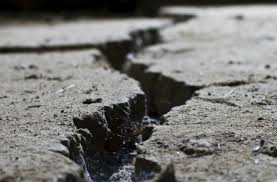News about maps
Digital cartography and GPS navigation
Mapstor news
This Day in History
Travelling with mapstor.com
Digital cartography and GPS navigation
115 years of flight
Next-generation of GPS satellites are headed to space
DJI Phantom 4 RTK - cartography of a new generation
Earthquake prediction systems
OneSoil map
Earthquake prediction systems

Earthquake prediction - the assumption that an earthquake of a certain magnitude will occur in a certain place at a certain time (or in a certain time range). Despite the considerable efforts of seismologists, it is not yet possible to give a forecast to the accuracy of a day or a month and to ensure that the prevented losses consistently exceed the economic damage from false alarms.
Reduction of loss from earthquakes to a minimum is a specific task and requires large resources. The more scientists know about earthquakes, we get more opportunities to reduce damage from them. They are presented in the form of special maps showing the spatial-temporal distribution of seismic hazard or the most likely force of tremors. These maps are based on information about earthquakes that have already occurred. Accordingly, the more data about earthquakes we have, the higher the accuracy of the forecast. However, we can’t always get the information about earthquakes and not because they did not occur, but because instrumental seismic observations have been conducted only for the last hundred years, and there are no accurate data on the parameters of earthquakes (coordinates of the epicenter, source depth, power) for the preceding period.
Scientists still do not know all the details of the physical processes associated with earthquakes, and the methods by which they can be accurately predicted. A number of phenomena are now viewed as possible harbingers of earthquakes: changes in the ionosphere, various types of electromagnetic indicators, including infrared and radio waves, radon emissions, and strange animal behavior.
According to the Seismological Community of America, the claimed forecast method, which would be confirmed as correct, should provide the expected magnitude with a certain tolerance, a well-defined zone of the epicenter, the range of time at which this event will occur, and the likelihood that it will occur. The data on which the prediction is based must be verifiable and the result of their processing must be reproducible.
Achieving success in long-term forecasts (for years or decades) is much more likely to achieve the forecast with an accuracy of up to a month. Exact short-term forecasts (from hours to days) are currently not possible.
The problem of earthquake prediction
In the framework of scientific work to predict earthquakes, seismologists investigated the relationship of the upcoming earthquake with the movement of the earth's crust , changes in the groundwater level in wells, release of radon or hydrogen, changes in the acceleration of seismic waves by electromagnetic fields (seismoelectromagnetism), large-scale changes in soil temperature, changes in ion concentration in the ionosphere.
The mystery of the processes of earthquakes often leads people who are not trained specifically for this to claim that they have managed to find a solution to the problem of predicting earthquakes. Their fantastic earthquake prediction theories include weather conditions and unusual clouds, moon phases. But these are all pseudoscientific theories.
Here you can have a look at the interactive map of earthquakes.
Digital cartography and GPS navigation 23-11-2018


